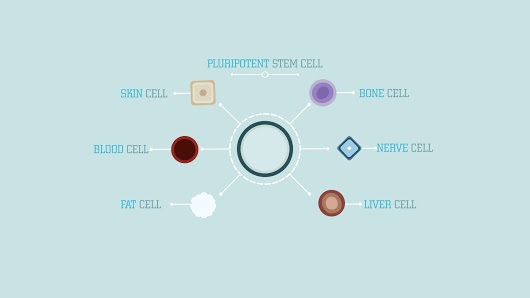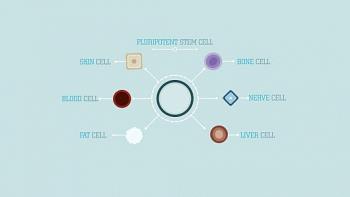Top-3 Ways Stem Cells Are Now Used In Medicine
The most well-known and widely used stem cell treatment is the bone marrow (blood stem cells) transplantation provided to treat malignant diseases and other pathologies of the blood. But stem cell is a resource that has endless possibilities in medicine.
The most well-known and widely used stem cell treatment is the bone marrow (blood stem cells) transplantation provided to treat malignant diseases and other pathologies of the blood. But stem cell is a resource that has endless possibilities in medicine. For decades, scientists all over the world have been working on finding the other applications of stem cells.
Currently, there are dozens of clinical trials for stem cells. Researchers are looking into the possibility of new treatment methods for macular degeneration, Parkinson’s and Huntington's diseases, diabetes, myocardial infarction, and spinal cord injury.
For stem cells transplant, a subtype of cells (pluripotent type) is used. They can transform into any tissue. There are two types of transplant:
- Autologous transplant. Doctors take own cells of a patient from fat or umbilical cord blood, less often - from the bone marrow.
- Allogeneic transplant. Specialists use fetal material from the liver cells and embryonic brain cells.
Some of newly discovered and tested methods are already in use helping hundreds of people. Stem cells are now applied in the therapy of such disorders:
- Autism
- Multiple Sclerosis
- Arthritis and arthrosis (and in Orthopedics in general)
Stem cell therapy for autism
Stem cells help trigger brain development in children with autism. Used in combination with conventional rehabilitation programs, it gives an opportunity to develop the most important social skills (to maintain a conversation) and cognitive functions (to write and learn).
As a result, a child's brain can create new neural connections which significantly improves the quality of life in a long term.
Although such autism therapy cannot guarantee a complete recovery, some positive effects are visible in a few months after the course.
Unfortunately, stem cell therapy for autism is provided only in a few countries. It is available in clinics of Germany, Republic of Korea, Turkey, Spain, and the Czech Republic.
Stem cell therapy for Multiple Sclerosis (MS)
Multiple sclerosis is an autoimmune disease. It means that the body's immune system destroys its nerves. The stem cells transplantation can stop such attacks.
Multiple sclerosis occurs when the immune system attacks the myelin membranes (sheath) that cover the brain and spinal cord cells. Their destruction provokes the symptoms of the disease. Therapy of multiple sclerosis is aimed at myelin reconstruction that leads to the restoration of the nerve impulses transmission responsible for the functions of the central nervous system (CNS).
The success of the multiple sclerosis treatment with stem cells depends on the initial condition of a patient, the presence of concomitant diseases. Remission can occur within a year after the procedure. Its duration is individual for each patient.
Stem cell therapy in Orthopedics
Treatment of arthritis and arthrosis with stem cells is a method of restoring the structure of the joint. Stem cells are turning on the tissue regeneration process, allowing to avoid surgery.
Stem cells are injected into the joint. They replace the damaged parts of the tissue and restore its structure. The metabolism eventually returns to normal.
Before the procedure, the tissue material is sent to the laboratory for research and cultivation of stem cells. It takes 7 days for cells isolated from fat, and up to 60 days for bone marrow cells. The first sample can be injected in one week. A doctor determines the number of procedures. The course lasts from 10 days (for using of fetal cells) to several months (for cells taken from adipose tissue).
The result is visible during the first week of treatment. The effect lasts from 3 to 5 years.
It is amazing what science can do nowadays. Stem cell therapy can be the long-anticipated cure for degenerative disorders and cancer for which there are no therapeutic options currently. A few years ago, autism and MS were incurable diseases, and now patients have a chance for recovery or, at least, a decent life. Apart from above-mentioned disorders, stem cells have a potential for use in tissue repair therapy.
But there are some scientific concerns regarding their uncontrollable proliferation which can cause tumor formation and unwanted immune responses, especially in cancer patients. That is why before starting stem cell therapy, a patient must consult with the best specialists in this field.
Comments
There are 0 comments on this post













